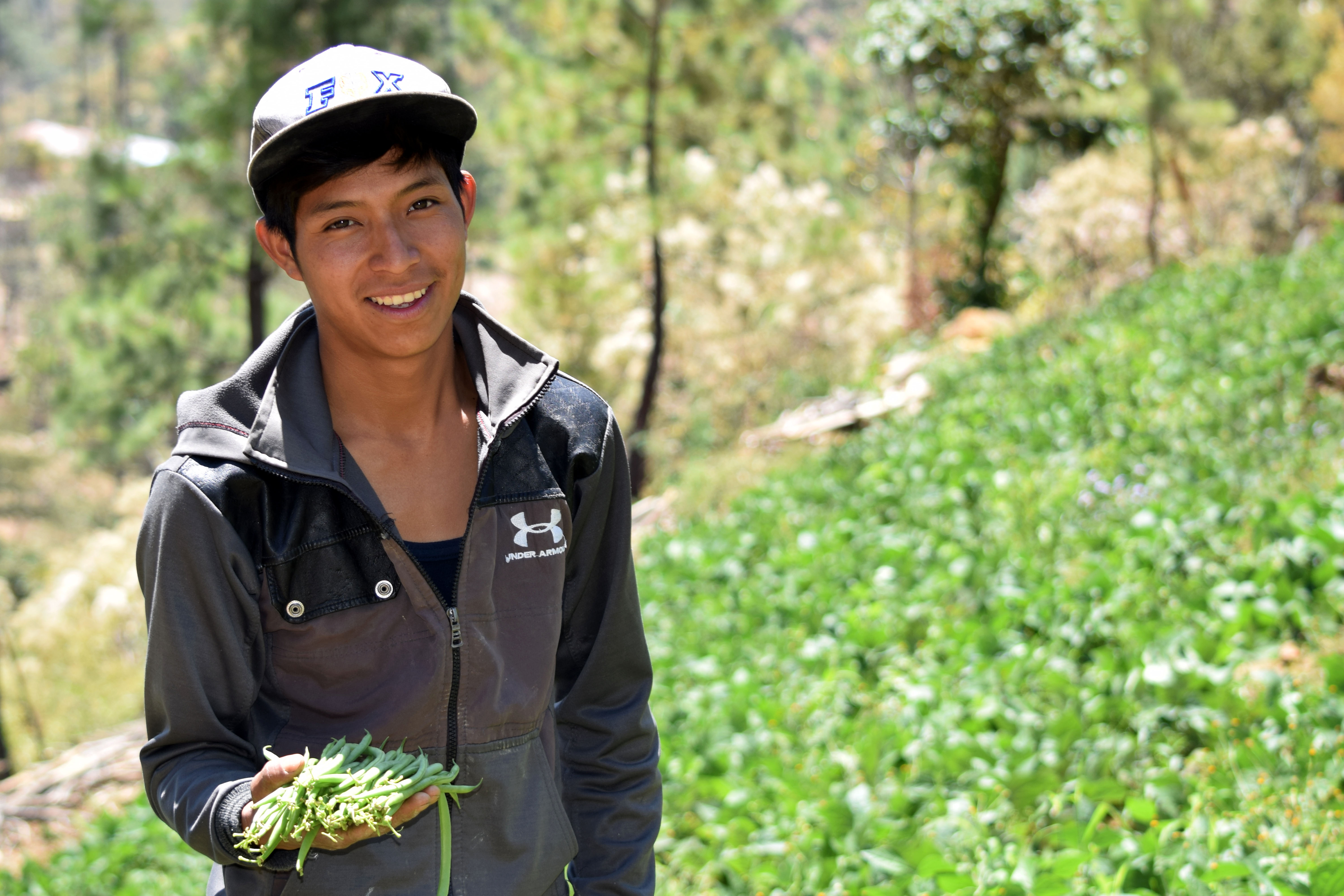
Taking a minute to marvel at a fresh harvest — a handful of green beans, just picked and ready for market — can be a chance to reflect back on hard work and lessons learned while working in the field. For Hilario Chaves, 20, this moment of pride is also a chance to recognize his success in trying out new farming practices, earning more income for his young family, and building a stronger foundation for his farm by reinvesting in its future.
On his 525-square-meter plot in Guatemala’s arid Western Highlands, Chaves works with his wife and young child to grow vegetables to eat and to sell. They recently installed drip irrigation on their plot and started using conservation agriculture practices, including crop rotation, mulching, and crop diversification.
With these new practices, he was able to add a second crop cycle, doubling his vegetable yield from 1,200 pounds to 2,400 pounds and increasing sales by $485. Some of those additional profits he invested in cows to diversify his farm’s options and access manure for fertilizer.
Chaves is one of 620 farmers — including more than 110 who are just getting started like he is — in this mountainous region who adopted new agricultural practices or technologies while working with a Feed the Future team focused on promoting drip irrigation and climate resilience, with a focus on connecting with the region’s youth.
“Most of the young people in this region are migrating because they believe it is so difficult to make money from working the land, growing local crops like corn and tomato,” said Débora Rivera, who managed the MásRiego project in Guatemala on behalf of the Horticulture Innovation Lab and the University of California, Davis, with funding from USAID/Guatemala.
“But we’ve been demonstrating that the land is a resource that can help you earn a living. Finding market opportunities with export crops, diversifying your crops and using technologies such as drip irrigation — these practices can help farmers find a way to stay near their families,” she said.
Diversifying crops has been key to Chaves’ success too, as he grows a mix of local crops — corn for his family, tomatoes and peppers to eat and sell at local markets — and export crops, specifically those green beans. This allows him to focus on food security for his family and community, while accessing greater profits from external markets.
Growing expertise among young agricultural technicians in the Western Highlands
Besides working with young farmers, the MásRiego project team has actually been powered by young people — including agricultural technicians and student interns, who have become local experts on drip irrigation while working for the Centro de Paz Bárbara Ford to help farmers.
Technicians were trained on drip irrigation and conservation agriculture practices — taught by faculty from the Panamerican Agricultural School, Zamorano, and from Kansas State University — and now have years of experience applying that knowledge in the field.
Students from the Universidad de San Carlos de Guatemala also worked as interns, partnering closely with the project’s technicians to gain hands-on experience.
Siria Cifuentes Fuentes, 28, worked for 6 months recently as an intern, installing drip irrigation while finishing up an agricultural engineering degree. Like other interns studying in Guatemala’s second largest city, this was her first time working in a rural community.
“I saw the reality of living in rural communities and that agriculture is a livelihood for people in these communities,” she explained. “Learning how to approach farmers and establish bonds of trust with them was one of my favorite parts. I received practical and theoretical knowledge that helped me grow my professional future.”
The MásRiego project in Guatemala was recently completed and managed by the Horticulture Innovation Lab, a global research network that advances fruit and vegetable innovations, empowering smallholder farmers to earn more income while better nourishing their communities. The research network is led by UC Davis, with funding from USAID as part of the U.S. government’s global Feed the Future initiative.
